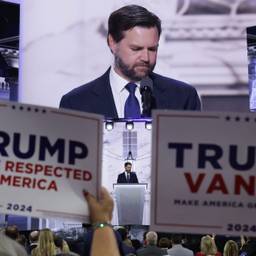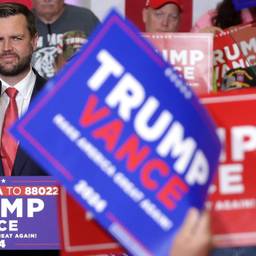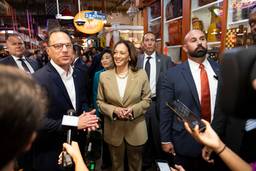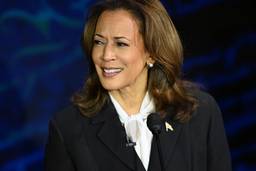Faux Populism Takes Center Stage at Vice-Presidential Debate
Tuesday’s debate offers Democrats a warning about how much more appealing Trumpism can be when presented in an equally mendacious but more competent way.
Akil Vicks
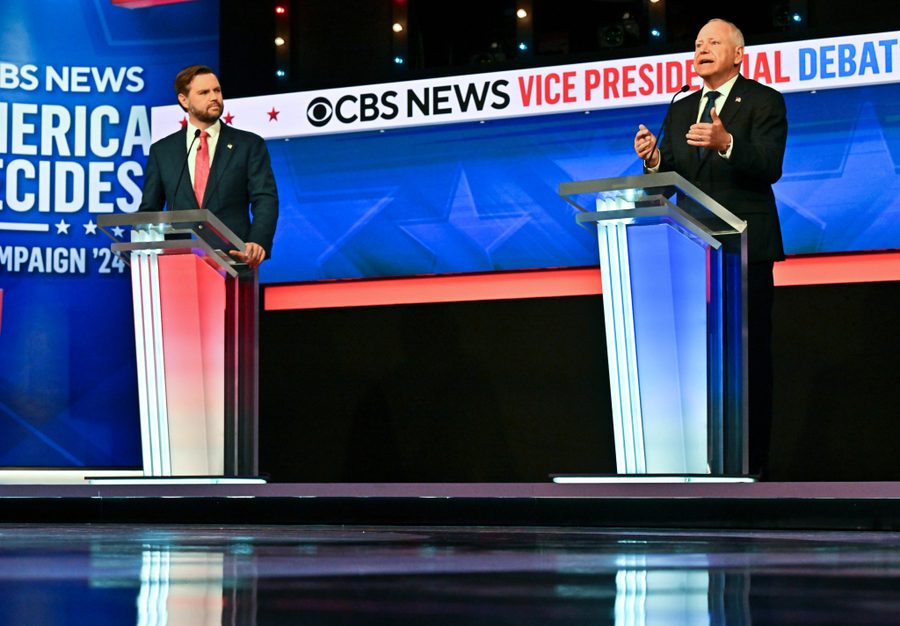
From a pure political horse-race perspective, many will come out of Tuesday’s vice-presidential debate feeling like Republican nominee and Ohio Sen. J.D. Vance “won.” He was the more polished candidate on stage, better suited to the format than his opponent. On the surface, he was able to articulate a more polished and substantive case for the Trump agenda than Trump has ever offered himself. There was very little trace of the “weird” far-right nativist obsessed with childless cat ladies and imagined Haitian culinary traditions. Vance instead took advantage of CBS’ decision to (mostly) not fact-check in real time as he presented a version of conservative economic populism undergirded by a foundation of lies, half-truths and selective omissions.
It seems unlikely that this debate will move the needle significantly in either candidate’s favor. Vice-presidential debates seldom do. Between some notable verbal gaffes by Democratic vice-presidential nominee and Minnesota Gov. Tim Walz and Vance inadvertently affirming large parts of President Joe Biden’s Build Back Better agenda, both campaigns can find reasons to claim that they came out on top. But far more interesting than either side’s subjective claims to victory is the way both candidates’ nominal commitment to a populist message changed the terrain for the debate.
Whatever one may think about the veracity of his claims or the salience of the issues he raised, Vance seemed unconstrained by the traditional neoliberal free market fundamentalism that has defined his party for the last four decades. Indeed, at times Vance supported the idea that the government actually can make people’s lives better — not merely by getting out of the way but by proactively making things like child care more affordable. While the substance of modern conservative policy betrays any notion that Republicans truly intend to build a middle-out economy that serves anyone but the richest and most powerful, this messaging continues to play well when Democrats allow conservatives to set the bounds of economic populism.
In some ways, the debate offered a window into an alternative universe: an idyllic version of U.S. politics only ever experienced through the pen of Aaron Sorkin. A world where Democrats and Republicans agree on general principles but respectfully disagree on how best to serve the interests of U.S. citizens. Vance’s two main goals were to dispel the notion of himself as a fringe far-right demagogue and to make the case that Trump’s first term delivered a period of prosperity that was squandered by his Democratic successors. He was much more successful in the former than the latter, finding several points of agreement with his opponent over issues most concerning to average Americans and even seeming to allow himself to be won over by Walz’s affable dad persona.
There was virtually no culture war in the debate. Vance did not bother labeling his opponents as communists. He let the topic of Walz’s numerous trips to China and his false claim of being present during the Tiananmen Square protests pass without accusing him of being a closet Maoist, as some of his supporters have. There was no discussion of race or “wokeness,” no fear-mongering over trans identities. Both candidates were intent on keeping the conversation rooted within the proverbial kitchen table issues that materially affect people’s lives.
The devil, of course, is in the details — or lack thereof. When questioned about economists who have offered a negative assessment of Trump’s economic plans, Vance responded by calling into question the credibility of the entire profession, citing economist support for the deindustrializing policies that offshored much of U.S. industrial production in the 1980s and ’90s. It was a shrewd counter to the criticism, evoking the anti-establishment politics that propelled Sen. Bernie Sanders’ (I-VT) presidential primary campaigns in 2016 and 2020 and played a substantial role in Trump’s 2016 victory, while also abstaining from offering any clarity on Trump’s confusing and ill-explained proposals.
Later on, when the subject of climate change was introduced, Vance made another extremely deft rhetorical move toward populism. Without actually agreeing that climate change is real and human-driven, he noted how the international shipment of goods is a major contributor to carbon emissions, and argued that an increase in domestic manufacturing would both benefit the national economy and help mitigate climate catastrophe.
To his credit, Walz’s trademark plainspokeness and Midwestern charm served him well while embracing the populist ground set by Vance. He did not attempt to defend or deny the negative impact that trade deals have had on U.S. workers and local economies. Instead, he was able to point out that Vance had essentially just supported the Biden-Harris administration’s Build Back Better plan with its investments in U.S. manufacturing, reducing reliance on China and building renewable energy infrastructure.
Arguably, Vance’s biggest gaffe of the night came when the moderators corrected his referring to Haitian migrants in Springfield, Ohio, as “illegal aliens.” When told that the people he had previously smeared with lies about stealing and eating pets did, in fact, have legal status to live here, he complained that the moderators broke the rules by fact-checking him in real-time. It was an admission that his professed populist concern for the effects of immigration on working-class communities is unable to withstand factual scrutiny. But it was an admission largely squandered by Walz as he chose to respond to fear-mongering over immigration by bragging about Democrats’ willingness to give Trump nearly everything he wanted on border policy. Perhaps even more egregious was Walz’s failure to push back on Vance as he blamed the proliferation of fentanyl in U.S. communities on “illegal” border crossings, when the truth is that 90% of fentanyl seized at the border is found on people with legal U.S. status, and more than half of that is being smuggled by U.S. citizens.
Neither candidate mentioned the longshoreman strike that started earlier that day or workers at Boeing losing their health benefits while picketing for a third week. However, Biden and Vice President Kamala Harris have offered their support for the International Longshoremen’s Association, while Republicans have called for the president to use the controversial Taft-Hartley Act to break the strike on behalf of shipping companies and retailers. Walz missed an opportunity to demonstrate the emptiness of his opponent’s populism by neglecting to raise the issue.
Right-wing populism is nothing new. The anti-immigrant sentiment that has fueled all three Trump presidential campaigns has a long history and no shortage of firebrand politicians using times of economic instability to accuse racially-coded interlopers of stealing prosperity from “real Americans.” Its power comes from the ability to redirect populist anger over unfair economic conditions away from the centers of wealth that benefit from exploitation and onto a constructed enemy to be punished.
Vance succeeded in advancing this faux-populism on Tuesday’s stage. Walz offered some solid pushback, but with his inexperience as a debater, he was largely unable to perform the real-time fact-checking that CBS failed to provide.
Walz is a good communicator but ultimately he is limited by his party, which chooses to cede ground on topics like immigration and energy production, while insufficiently promoting its mostly positive record on labor and domestic infrastructure. This debate may not have much effect in November’s election, but it still offers valuable lessons for Democrats to learn. Trump’s populism is blunted by his capricious nature and inability to function as anything other than an entertainer. On Tuesday night, J.D. Vance demonstrated how much alluring Trump’s politics can seem when presented competently and unencumbered by inconvenient facts.
Disclosure: Views expressed are those of the writer. As a 501©3 nonprofit, In These Times does not support or oppose any candidate for public office.
Akil Vicks is a freelance journalist interested in the intersection between race, poverty and capitalism. He writes about politics and culture at onone.substack.com.

